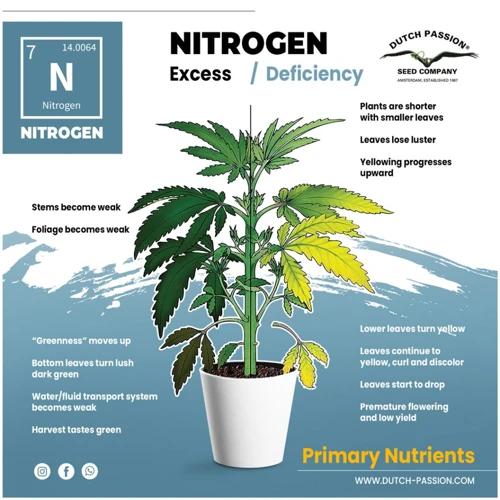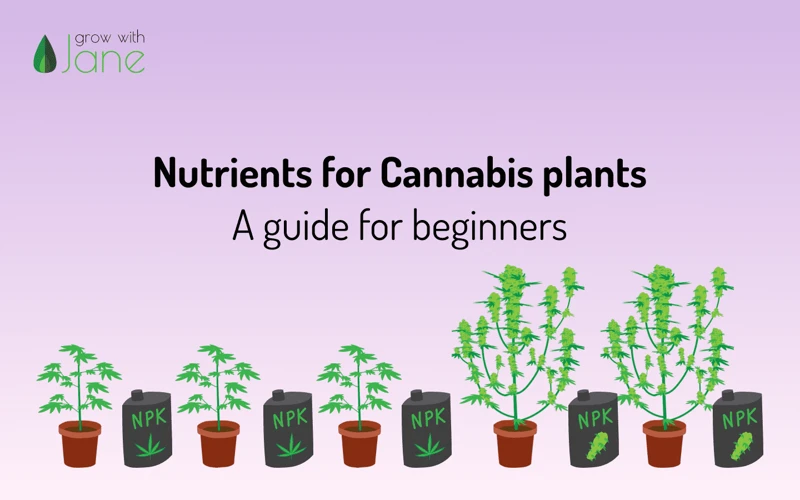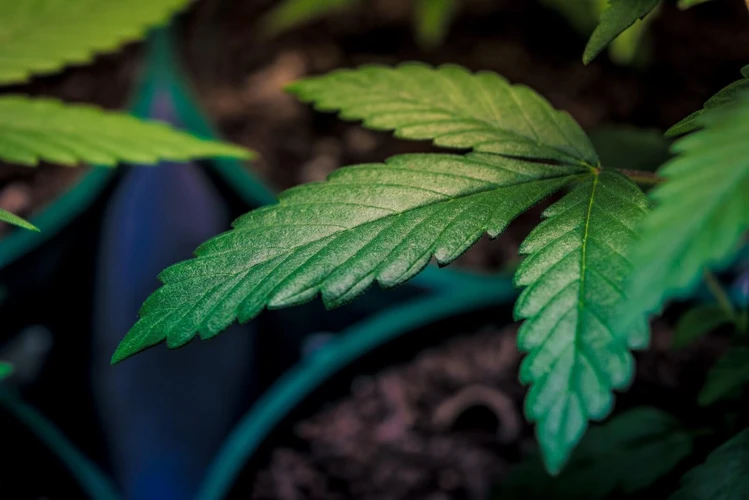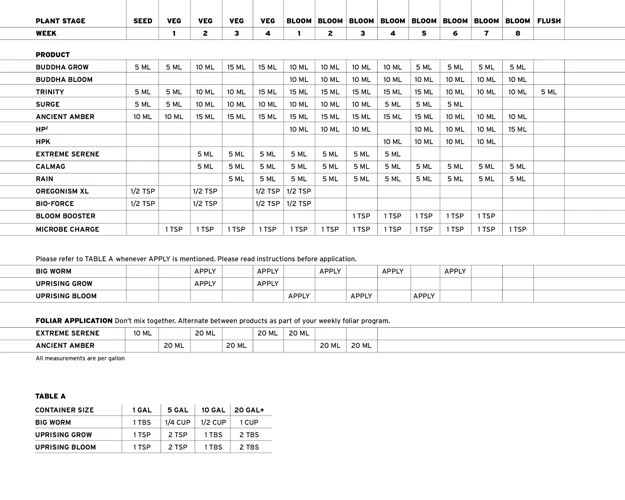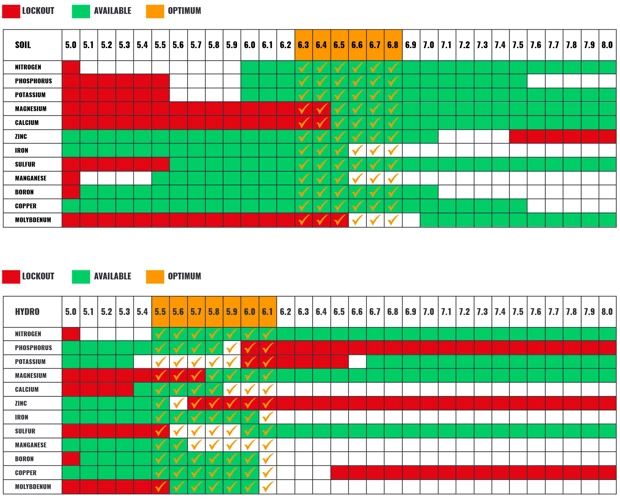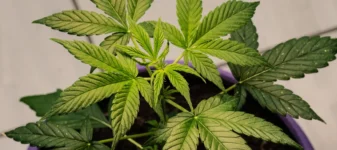
Creating an Organic Feeding Schedule for Your Cannabis Plants
Growing cannabis can be an enjoyable and rewarding experience but it can also be quite challenging, especially for beginners. One crucial aspect that affects the overall growth and yield of your cannabis plants is the feeding schedule. Planning an effective feeding schedule for your cannabis plants can be perplexing, especially if you’re new to organic growing. This article will guide you through the process of creating an organic feeding schedule for your cannabis plants step-by-step. By the end of this article, you’ll have a comprehensive understanding of the nutrient cycle, types of organic nutrients, and tips for maximizing yield. Let’s dive into the world of organic cannabis growing.
Why choose organic feeding?
Contents
As a cannabis grower, you’re faced with an array of decisions to make when it comes to feeding and caring for your plants. One of the biggest choices you’ll need to make is whether to use chemical or organic nutrients. While chemical fertilizers may seem like a quick fix, they can harm the environment, your plants, and even yourself. That’s why many growers are turning to organic feeding methods, which offer a range of benefits for both growers and plants. Let’s explore why organic feeding is the way to go.
Benefits of organic feeding
Organic feeding has several benefits for cannabis plants that cannot be achieved through traditional, synthetic fertilizers. Some of these benefits include:
1. Improved Soil Health: Using organic nutrients promotes the growth of beneficial microorganisms that help break down organic matter and boost soil fertility. This ultimately increases the nutrient uptake of the plant and leads to healthier, more productive soil.
2. Enhanced Flavor and Aroma: Organic nutrients can improve the taste and smell of cannabis buds by providing a full spectrum of minerals and nutrients that support robust terpene production.
3. Better Nutrient Absorption: Organic fertilizers are slow-release, meaning they provide a steady supply of nutrients to the plant over time. This allows for better nutrient absorption and minimizes the risk of over-fertilization or nutrient burn.
4. Reduced Environmental Impact: Organic feeding is more eco-friendly than synthetic fertilizers as it does not contribute to the buildup of harmful chemicals in soil and waterways.
Switching to organic feeding can improve the quality of your cannabis plants, enhance flavor and aroma, improve soil health, promote better nutrient absorption, and reduce environmental harm.
Types of Organic Nutrients
When it comes to feeding your cannabis plants, there are a variety of organic nutrient options available. These nutrients are derived from natural sources and are free of synthetic additives, making them a popular choice among growers who value sustainability and plant health. While the selection of organic nutrients may seem overwhelming at first, understanding the different types available and their unique benefits can help you create a feeding regimen that works best for your plants. Let’s take a closer look at some of the top organic nutrient options on the market.
List of organic nutrients
Organic nutrients are derived from natural plant or animal sources, as opposed to synthetic nutrients made in a laboratory. Here is a list of some commonly used organic nutrients and their benefits:
- Fish emulsion: Made from fish waste, this nutrient is high in nitrogen and provides consistent, slow-release feeding for plants.
- Blood meal: A byproduct of slaughterhouses, blood meal is a source of nitrogen that is quickly absorbed by plants.
- Bone meal: Ground-up bones that provide a slow-release source of both nitrogen and phosphorus.
- Kelp meal: Made from dried and ground seaweed, kelp meal provides a wide range of micronutrients and trace minerals, as well as some nitrogen and potassium.
- Compost: Made from decomposed organic matter, compost is a rich source of nutrients, including nitrogen, phosphorus, and potassium, as well as trace minerals.
- Worm castings: The waste produced by earthworms, worm castings are high in nitrogen and other nutrients, and improve soil structure and water retention.
- Guano: Bat or bird excrement that is high in nitrogen, phosphorus, and potassium, as well as trace minerals.
- Alfalfa meal: Made from dried and ground alfalfa plants, alfalfa meal is high in nitrogen and contains other nutrients like potassium, calcium, and magnesium.
- Green manure cover crops: Planting cover crops like clover, peas, or beans and then turning them into the soil before they flower can provide a source of nutrients and improve soil health.
It’s important to note that different plants have different nutrient requirements and some organic nutrients may work better for certain plants than others. It’s also important to choose organic nutrients that are appropriate for the growing stage of your plants. By using a variety of organic nutrients, you can provide a balanced diet for your cannabis plants that will promote healthy growth and maximize yields.
Understanding the Nutrient Cycle
As you delve deeper into the world of organic feeding for cannabis plants, it is important to have a good understanding of how the nutrient cycle works. By gaining knowledge of the natural processes that occur when providing your plants with nutrients, you can create a feeding schedule that is tailored to their needs. The nutrient cycle involves a complex series of stages that are essential for the growth and health of your plants. Understanding these stages is key to achieving a successful harvest. Let’s take a closer look at the different phases of the nutrient cycle.
The four stages of nutrient cycle
The nutrient cycle is a vital process that cannabis plants undergo to acquire the necessary nutrients for their growth and development. Understanding the four stages of the nutrient cycle is essential in creating an organic feeding schedule that caters to the needs of your plants.
1. Breakdown Stage: During the breakdown stage, organic matter is decomposed into simpler forms such as nitrogen, phosphorus, and potassium. This process is carried out by microorganisms such as bacteria, fungi, and earthworms that break down organic matter into useful nutrients.
2. Release Stage: Once the organic matter has been broken down, the nutrients are released into the soil, making them available for absorption by the plant’s roots. In this stage, the plant roots utilize nutrients such as nitrogen, phosphorus, and potassium to grow and develop.
3. Uptake Stage: The uptake stage is where the plant absorbs the nutrients from the soil through its roots. Adequate moisture and proper pH levels are critical for this stage to occur. The plant will absorb nutrients such as nitrogen, phosphorus, and potassium as well as trace elements such as calcium, magnesium, and iron.
4. Utilization Stage: The final stage of the nutrient cycle is where the plant utilizes the nutrients to grow, develop, and produce flowers. During this stage, the plant requires the proper amount and balance of nutrients to prevent deficiencies or excesses that could harm the plant.
By understanding the four stages of the nutrient cycle, you can develop an organic feeding schedule that supports each stage of the cycle to ensure your plants are receiving the proper nutrients at the right time throughout their growth cycle.
How to Create an Organic Feeding Schedule
One of the most critical aspects of growing healthy cannabis plants is to create an organic feeding schedule that meets their unique needs. While it may seem daunting at first, with some careful planning and consideration, you can develop a feeding schedule that promotes optimal plant growth and yields. To get started, you’ll need to explore the types of organic nutrients available and gain an understanding of the nutrient cycle. From there, you can create a feeding schedule that takes into account the needs of your plants at each stage of their growth. Additionally, it’s important to keep track of pH levels and implement tips for maximizing yield in order to ensure a successful harvest.
Considerations for creating a feeding schedule
When creating a feeding schedule for your cannabis plants, it is important to take into account several factors to ensure optimal growth and yield. Below are some considerations to keep in mind:
| Consideration | Description |
|---|---|
| Plant stage | Seedlings and clones require less feeding than mature plants. Make sure to adjust your feeding schedule accordingly. |
| Pot size and type | The larger the pot, the more nutrients your plant will need. Additionally, different pot types (such as fabric or plastic) can affect how quickly the soil dries out and how often you need to feed. |
| Soil type | The type of soil you use can affect nutrient levels and uptake. Consider using a high-quality organic soil mix specifically designed for growing cannabis. |
| Environmental factors | Temperature, humidity, and light levels can all affect plant growth and nutrient uptake. Make adjustments to your feeding schedule as needed based on environmental conditions. |
| Nutrient type and strength | Different strains and stages of growth require different nutrient ratios and strengths. Make sure to research your specific strain and adjust your feeding schedule accordingly. |
| Watering frequency | Overwatering or underwatering can affect nutrient uptake and cause other issues. Make sure to water your plants at the appropriate frequency and adjust your feeding schedule accordingly. |
By taking the above factors into consideration, you can create a feeding schedule that is tailored to the specific needs of your cannabis plants. Remember to track your progress and make adjustments as necessary to ensure optimal growth and yield.
What to track and how often to feed
When creating an organic feeding schedule for your cannabis plants, it’s important to keep track of several factors and adjust your feeding accordingly. Here are some essential things to track and how often to feed:
Plant development: Cannabis plants go through various growth stages, from seedling to flowering. Each stage requires different nutrients, so it’s crucial to adjust your feeding schedule accordingly.
- During the vegetative stage, plants need higher levels of nitrogen to support leaf and stem growth. Feed every 1-2 weeks.
- During the flowering stage, plants need higher levels of phosphorus and potassium to support bud development. Feed every 2-3 weeks.
Nutrient levels: Keep an eye on the nutrient levels in your soil or growing medium. Testing kits are available that can measure the levels of nitrogen, phosphorus, and potassium, as well as pH levels.
- If nitrogen levels are low during the vegetative stage, increase the frequency of feeding or add a nitrogen-rich fertilizer.
- If phosphorus or potassium levels are low during the flowering stage, adjust your feeding schedule or add a bloom booster fertilizer.
- If pH levels are out of range, adjust as necessary to optimize nutrient uptake.
Plant health: Inspect your plants regularly for signs of nutrient deficiencies or excesses, as well as any pests or diseases.
- If plants are showing signs of yellowing leaves, stunted growth, or other symptoms of nutrient deficiencies, adjust your feeding schedule or add a targeted micronutrient fertilizer.
- If pests or diseases are present, take appropriate measures to address the issue before continuing with your feeding schedule.
By tracking these factors and adjusting your feeding schedule accordingly, you can ensure that your cannabis plants are getting the nutrients they need to thrive and produce a bountiful harvest.
Managing pH Levels
The pH levels of your cannabis plants are an essential aspect to consider while creating an organic feeding schedule. Maintaining the appropriate pH levels can lead to healthier plants with optimal nutrient uptake. However, it can be daunting to manage pH levels if you’re not familiar with the science behind it. In this section, we’ll delve into the importance of pH levels in growing cannabis, and how to measure and adjust them effectively.
Why pH is important
Maintaining the proper pH level is crucial for ensuring healthy growth and maximum yield of your cannabis plants. pH refers to the level of acidity or alkalinity in the soil or growing medium. The ideal pH range for growing cannabis is between 6.0 and 7.0 pH.
If the pH level is too high or too low, it can affect the plant’s ability to absorb nutrients, leading to nutrient deficiencies or toxicities. For example, if the pH level is too low, below 6.0 pH, it can cause an iron deficiency. On the other hand, if the pH level is too high, above 7.0 pH, it can lead to a calcium and magnesium deficiency.
It’s important to monitor the pH levels regularly, especially when growing in soil, as it can change over time due to factors such as fertilizer use, water quality, and the breakdown of organic matter. pH levels can be tested using a pH meter or strips, both of which are readily available at most gardening stores.
Adjusting the pH level can be done by adding pH up or down solutions to the water or nutrient solution being used. It’s important to follow the instructions on the product carefully and to make adjustments gradually, as sudden changes in pH levels can shock the plant’s roots.
Maintaining the proper pH level is crucial for healthy growth and maximum yield of your cannabis plants. Regular monitoring and adjustment of pH levels is essential for ensuring your plants are able to absorb the nutrients they need to thrive.
How to measure and adjust pH levels
Maintaining the correct pH level of your soil is crucial for optimizing the growth and overall health of your cannabis plants. Here are the steps for measuring and adjusting pH levels:
- Get a pH meter: To accurately measure pH levels, you will need a digital meter specifically designed for soil testing. These meters can be found at most gardening or hydroponic stores, and range in price from inexpensive handheld models to more advanced options.
- Test the pH: To test the pH levels of your soil, first, gather a small sample from the root zone. Place the sample in a clean container and moisten it with distilled water. Then, insert the pH meter into the soil mixture and wait a few seconds for a reading to appear on the meter display.
- Adjust the pH: Depending on your reading, you may need to adjust the pH levels of your soil. If the pH level is too high (alkaline), it can be corrected by adding an acidic substance such as vinegar or sulfur. If the pH level is too low (acidic), adding a basic substance like lime can help balance it out.
- Re-test the pH: After adding the necessary substances to adjust the pH, wait a few hours before re-testing the soil. This allows the soil to adjust to the changes. If the pH levels are still not within the optimal range, you may need to repeat the process until correct levels are reached.
- Maintain the pH: Once you have achieved the correct pH levels for your soil, it is important to regularly monitor and maintain these levels. This can be done by testing the soil once a week and adjusting the pH as necessary.
Remember, maintaining the proper pH levels in your soil is essential for ensuring that your cannabis plants receive the necessary nutrients they need to thrive. By testing and adjusting your pH levels regularly, you can help your plants achieve optimal growth and yield.
Tips for Maximizing Yield
When it comes to growing cannabis plants, one of the main goals for most cultivators is to maximize their yield. After all, a successful harvest not only depends on the quality of the buds, but also on the quantity. There are several techniques that can be employed to increase the yield of your cannabis plants, from timing and pruning to harvesting and drying. In this section, we’ll explore some tips that can help you get the most out of your grow. So, let’s dive in and discover how to boost your harvest!
Timing and pruning techniques
When it comes to maximizing your cannabis yield through organic feeding, proper timing and pruning techniques play a crucial role. The timing of your feedings can affect your yield significantly, and pruning your plants can help prevent overcrowding and allow for better nutrient absorption. Here are some helpful tips for timing and pruning your plants:
| Timing tips | Pruning tips |
|---|---|
| Feed your plants during their vegetative stage to encourage growth. | Remove any yellowing or damaged leaves to prevent the spread of disease and to promote healthy growth. |
| During the flowering stage, reduce the amount of nitrogen in your feedings as the plant focuses on producing buds. | Top your plants by removing the top portion of the main stem to encourage side branching and increase yield. |
| Feed your plants less frequently during the last few weeks of the flowering stage to allow the plants to use up the remaining nutrients and promote a smoother smoke. | Trim away any small, low-yielding buds to direct the plant’s energy towards growing larger, more potent buds. |
These timing and pruning techniques can help ensure that your cannabis plants receive the nutrients they need to produce a healthy, high-yielding crop. By paying attention to the different stages of growth, you can adjust your feeding and pruning schedules accordingly to maximize your results.
Harvesting and drying tips
Harvesting and drying are the final stages of growing cannabis plants. Here are some tips to help you get the most out of your harvest:
Harvesting tips:
| Tip | Description |
|---|---|
| Monitor trichomes | The key to harvesting at the right time is to monitor the trichomes. These are the tiny, hair-like structures that cover the flower buds. When they turn from clear to cloudy or amber, it’s time to harvest. |
| Harvest in the morning | Harvesting in the morning, when the plants are still moist with dew, can help preserve the flavor and aroma of the buds. |
| Trim the buds | Trimming the buds of excess leaves and stems can improve the quality of the final product. |
Drying tips:
| Tip | Description |
|---|---|
| Dry in a cool, dark place | Drying the buds in a cool, dark place can help preserve the potency and flavor of the final product. |
| Hang the buds | Hanging the buds upside down in a well-ventilated room can help them dry evenly and prevent mold. |
| Monitor humidity | It’s important to monitor the humidity in the drying room to prevent the buds from becoming too dry or too moist. |
| Cure the buds | Curing the buds in airtight containers for a few weeks can help them develop a smoother flavor and better aroma. |
By following these tips, you can ensure a successful and rewarding harvest of your cannabis plants.
Conclusion
In conclusion, creating an organic feeding schedule for your cannabis plants requires careful consideration and attention to detail. By understanding the benefits of organic feeding, the types of organic nutrients available, and the nutrient cycle, you can create a personalized feeding schedule that meets the specific needs of your plants.
It’s important to track the growth and development of your plants and adjust your feeding schedule as needed. Keeping an eye on pH levels and ensuring they remain within the optimal range is crucial for maximizing yield.
In addition, using proper timing and pruning techniques, as well as effective harvesting and drying methods, can further enhance your plants’ growth and yield.
While creating an organic feeding schedule may seem daunting at first, with the right knowledge and tools, you can successfully cultivate healthy and robust cannabis plants that provide a bountiful harvest. By prioritizing organic feeding, you can ensure that your plants are getting the nutrients they need while also promoting environmental sustainability and natural cultivation practices. Start creating your organic feeding schedule today and see the benefits for yourself.
Frequently Asked Questions
How often should I feed my cannabis plants?
The feeding schedule for your cannabis plants depends on several factors, such as the stage of growth and the type of medium you’re using. In general, you should feed your plants every 1-2 weeks during the vegetative stage and every 1-3 days during the flowering stage.
Can I use regular soil for my organic cannabis grow?
Yes, you can use regular soil for your organic cannabis grow. However, it’s important to choose a good quality soil that has sufficient nutrients and organic matter. You may also need to supplement with additional organic nutrients during the growing process.
What is the best pH range for my cannabis plants?
The best pH range for cannabis plants is between 6.0 and 7.0. This range allows for optimal nutrient uptake, as well as the growth of beneficial microorganisms in the soil. Keep in mind that different stages of growth may require different pH levels.
How do I know when to harvest my cannabis plants?
You can determine when to harvest your cannabis plants by observing the trichomes. When the trichomes turn from clear to cloudy, and some have turned amber, it’s usually a good time to start harvesting. You can also look for other signs such as yellowing of the leaves or the appearance of swelling buds.
What are the benefits of using organic nutrients?
Organic nutrients provide a range of benefits for your cannabis plants, including improved soil health, increased nutrient uptake, and better flavor and aroma. They also tend to be more sustainable and eco-friendly than synthetic nutrients.
How can I improve the yield of my cannabis plants?
You can improve the yield of your cannabis plants by using high-quality organic nutrients, providing the proper lighting and ventilation, and using pruning techniques to promote healthy growth. It’s also important to harvest at the right time and to dry and cure your buds properly.
Can I reuse soil from a previous grow?
Yes, you can reuse soil from a previous grow, but it’s important to ensure that the soil is properly amended with additional organic matter and nutrients. You should also check the pH levels and ensure that the soil is free of pests and diseases.
What is the difference between compost tea and nutrient tea?
Compost tea is made from steeping compost in water to create a liquid fertilizer that’s rich in beneficial microorganisms. Nutrient tea, on the other hand, is made by brewing organic nutrients in water to create a solution that provides essential nutrients for your plants.
What are the best pruning techniques for cannabis plants?
The best pruning techniques for cannabis plants depend on the specific strain and the growth stage of the plant. However, some common techniques include removing the lower leaves to promote better air circulation, removing any yellowing or damaged leaves, and topping to promote bushier growth.
What are some common mistakes to avoid when growing organic cannabis?
Some common mistakes to avoid when growing organic cannabis include overfeeding, overwatering, not controlling pests and diseases, and not properly adjusting pH levels. It’s also important to use high-quality organic nutrients and to follow a consistent feeding schedule.

